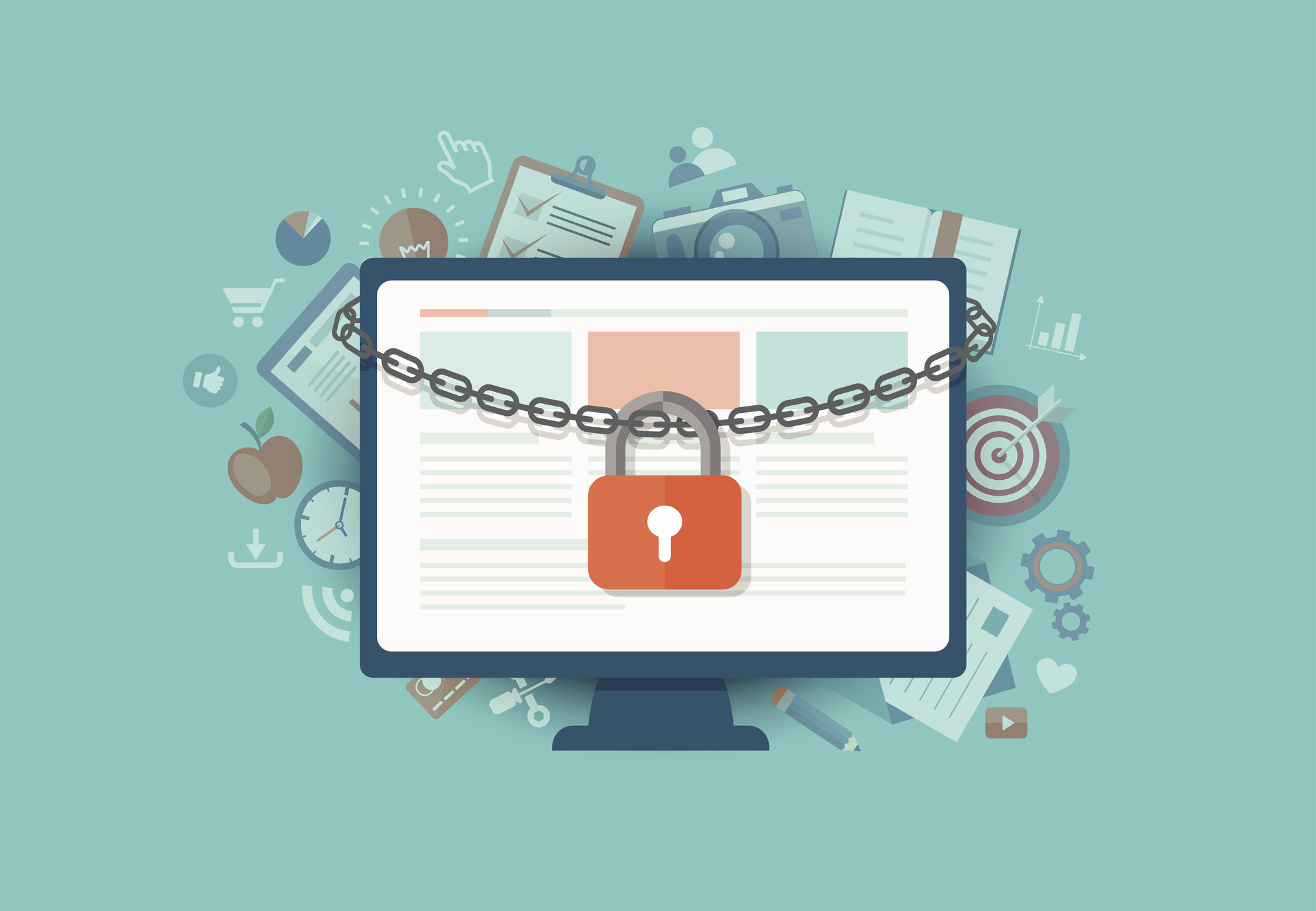By: Jennifer Brazer
Jennifer is the author of From Cubicle to Cloud and Founder/CEO of Complete Controller, a pioneering financial services firm that helps entrepreneurs break free of traditional constraints and scale their businesses to new heights.
Fact Checked By: Brittany McMillen
Payment Card Industry Information Security Best Practices
Payment card industry information security encompasses the protocols, technologies, and standards that protect cardholder data from breaches and fraud. These security measures include network protection, data encryption, access controls, vulnerability management, and compliance with the Payment Card Industry Data Security Standard (PCI DSS), which major card brands like Visa and Mastercard enforce to safeguard payment transactions.
I’ve spent over 20 years as CEO of Complete Controller working with businesses across every sector imaginable, and I’ve witnessed firsthand how payment security can make or break a company. With only 43% of U.S. businesses achieving PCI compliance according to Verizon’s latest report, the stakes have never been higher. Data breaches now cost companies an average of $4.88 million globally—that’s a 10% increase from last year alone. This article arms you with the concrete strategies, tools, and insights you need to protect your payment systems, avoid devastating breaches, and build customer trust through rock-solid security practices.

What is payment card industry information security?
- Payment card industry information security protects cardholder data through protocols, technologies, and PCI DSS compliance standards
- Network security creates barriers against unauthorized system access
- Data encryption scrambles sensitive information during storage and transmission
- Access controls limit who can view and handle payment data
- Vulnerability management identifies and fixes security weaknesses before criminals exploit them
Building and Maintaining Secure Network Infrastructure
Creating a fortress around your payment data starts with robust network architecture. The fundamentals haven’t changed, but the execution has become more sophisticated with PCI DSS 4.0 requirements.
Your firewall configuration forms the first line of defense. Every system handling cardholder data needs properly configured firewalls with default passwords eliminated immediately. I’ve seen too many breaches happen because someone left “admin123” as their password—it’s like leaving your front door wide open with a welcome mat for hackers.
Network segmentation has proven its worth time and again. The Co-op’s successful PCI compliance journey demonstrates this perfectly—they isolated their payment systems using strategic firewall placement, avoiding the nightmare of reconfiguring IP addresses for 210,000 devices. This approach saved them millions while dramatically reducing their attack surface.
Critical Network Security Components
- Traffic filtering to block unnecessary ports and services
- Zero-trust architecture limiting lateral movement during breaches
- Regular firewall rule reviews and updates
- Network monitoring for suspicious activity patterns
- Documented change management procedures
The shift to zero-trust principles represents a fundamental change in how we think about payment processing security best practices. Instead of trusting anything inside your network perimeter, every access request gets verified—no exceptions.
Protecting Cardholder Data Through Encryption and Access Controls
Data protection forms the heart of payment security. Without proper encryption and access controls, you’re essentially storing customer financial information in plain sight.
End-to-end encryption transforms readable card data into scrambled code that’s useless to thieves. This protection must extend across every touchpoint—from the moment a customer swipes their card until the transaction completes. AES-256 encryption remains the gold standard for data at rest, while TLS 1.2 or higher secures data in transit.
Implementing role-based access control (RBAC)
Access control determines who sees what within your payment systems. Role-based access control assigns permissions based on job functions rather than individual users, creating a scalable security model that grows with your business.
At Complete Controller, we’ve refined our RBAC implementation to include:
- Quarterly access reviews removing unnecessary permissions
- Automated de-provisioning when employees leave
- Detailed audit trails for every data access
- Segregation of duties preventing single-person fraud
Data minimization complements these controls by reducing what you store. If you don’t need the full card number after processing, don’t keep it. Every piece of data you retain becomes a potential liability.
Maintaining a Robust Vulnerability Management Program
Threats evolve faster than most businesses can adapt. A comprehensive vulnerability management program keeps you ahead of attackers by identifying and fixing weaknesses before they become entry points.
Patch management sits at the program’s core. Critical vulnerabilities need patches within 30 days—no excuses. The Target breach of 2013 serves as a permanent reminder of what happens when vulnerability management fails. Hackers infiltrated their network through a third-party vendor, ultimately compromising 40 million credit cards and costing the company $202 million.
Essential Vulnerability Management Practices
- Monthly vulnerability scans using approved scanning vendors
- Annual penetration testing simulating real attacks
- Real-time malware protection on all systems
- Third-party vendor security assessments
- Incident response planning and regular drills
Your approach to fraud prevention in the payment card industry must include proactive threat hunting. Waiting for alerts means you’re already behind—successful programs actively search for indicators of compromise.

Adapting to PCI DSS 4.0: The 2025 Compliance Landscape
PCI DSS 4.0 brings the most significant changes we’ve seen since the standard’s inception. The March 31, 2025 deadline for full implementation approaches quickly, and businesses need to act now.
Multi-factor authentication (MFA) requirements
MFA becomes mandatory for all administrative access to cardholder data environments. This requirement closes a critical gap—passwords alone simply aren’t sufficient anymore. Organizations implementing MFA early report 90% reductions in compromise attempts according to Thales research.
Implementation challenges include:
- Legacy system compatibility issues
- User training and adoption resistance
- Token management complexity
- Recovery procedures for lost authentication devices
The key lies in choosing MFA solutions that balance security with usability. Biometric options, push notifications, and hardware tokens each have their place depending on your environment.
Customized approach to compliance
PCI DSS 4.0 introduces flexibility through its customized approach option. Instead of following prescriptive requirements, businesses can implement compensating controls that achieve the same security objectives. This change acknowledges that one-size-fits-all security doesn’t work in today’s diverse technology landscape.
Securing Cloud-Based Payment Environments
Cloud adoption has transformed how businesses process payments, but it hasn’t eliminated security responsibilities. The shared responsibility model means you still own critical security functions even when using cloud providers.
Understanding your responsibilities starts with mapping data flows. Where does cardholder data travel? Who has access? How is it protected at each stage? These questions guide your cloud security strategy.
Cloud Security Best Practices
- Contractual agreements defining security responsibilities
- Data residency controls for regulatory compliance
- Encryption key management maintaining your control
- Regular security assessments of cloud configurations
- Incident response coordination with cloud providers
Modern information security for payment systems must account for distributed architectures. Your security perimeter now extends far beyond traditional boundaries, requiring new approaches to monitoring and control.
Implementing Security Policies and Employee Training
Technology alone won’t protect your payment data. Human factors cause most security breaches, making comprehensive policies and training essential components of your security program.
Security awareness training transforms employees from potential vulnerabilities into active defenders. Regular training sessions should cover:
- Phishing recognition and reporting procedures
- Password security and MFA usage
- Physical security for payment terminals
- Social engineering tactics and responses
- Incident reporting responsibilities
Policy development requires balancing security needs with operational efficiency. Overly restrictive policies get circumvented, while lax policies invite breaches. The sweet spot enables business while maintaining protection.
Creating a security-first culture
Building security awareness into your company culture pays dividends beyond compliance. When employees understand why security matters—not just what rules to follow—they become invested in protection efforts.
At Complete Controller, we’ve seen this transformation happen repeatedly. Companies that invest in security culture report fewer incidents, faster breach detection, and improved overall compliance scores.
Advanced Threat Detection and Response
Modern payment environments face sophisticated attacks requiring equally sophisticated defenses. Traditional signature-based detection can’t keep pace with evolving threats.
Behavioral analytics represent the next frontier in threat detection. By establishing normal patterns for accounts, systems, and transactions, these tools identify anomalies that signal potential breaches. A user suddenly accessing systems at 3 AM or downloading unusual data volumes triggers investigation.
Building Effective Threat Detection
- Security Information and Event Management (SIEM) deployment
- User and Entity Behavior Analytics (UEBA) implementation
- Threat intelligence feed integration
- 24/7 monitoring capabilities
- Automated response playbooks
The average breach goes undetected for 207 days according to industry research. Reducing this dwell time requires continuous monitoring combined with rapid response capabilities.
Cost Considerations and ROI of PCI Compliance
Small businesses often struggle with compliance costs ranging from $1,000 to $10,000 annually according to Central Eyes research. These expenses cover vulnerability scans, penetration testing, security tools, and potential consultant fees.
The investment pays for itself by preventing breaches. With average breach costs approaching $5 million and 43% of cyberattacks targeting small businesses, compliance becomes cheap insurance. Beyond financial protection, compliance builds customer trust and opens doors to larger contracts requiring security verification.
Maximizing Compliance ROI
- Automate repetitive security tasks
- Leverage cloud-based security tools
- Combine compliance efforts across frameworks
- Document everything for faster audits
- Build security into processes rather than bolting on later
Future-Proofing Your Payment Security Strategy
Payment security continues evolving with emerging technologies and threats. Quantum computing threatens current encryption methods, while new payment methods like cryptocurrency introduce novel risks.
Staying ahead requires continuous adaptation. Monitor payment card security standards updates, participate in industry forums, and maintain relationships with security vendors who provide early threat warnings.
Building resilience into your security architecture means assuming breaches will occur and planning accordingly. Segmentation limits damage, encryption protects data even when stolen, and robust incident response minimizes impact.
Final Thoughts
Payment card industry information security has evolved from a compliance checkbox into a business imperative. The statistics paint a clear picture—with less than half of businesses achieving compliance and breach costs soaring, the time for action is now.
Success requires more than technology implementation. It demands cultural change, continuous improvement, and unwavering commitment to protecting customer data. The tools and standards exist; execution separates protected businesses from breach headlines.
Your next step starts with honest assessment. Where are your gaps? What systems need updating? Which processes require refinement? Answer these questions, then build your roadmap to comprehensive payment security.
Ready to strengthen your payment security and achieve PCI compliance? Visit Complete Controller to discover how our team helps businesses implement these best practices for payment security while maintaining operational efficiency. Our experts bring decades of experience protecting cardholder data protection across every industry sector.

FAQ
What is PCI DSS compliance and who needs it?
PCI DSS compliance involves following security standards set by major card brands to protect payment data. Every business that accepts, processes, stores, or transmits credit card information must comply, regardless of size or transaction volume. Non-compliance results in fines ranging from $5,000 to $100,000 monthly.
How do I implement multi-factor authentication for PCI DSS 4.0?
Deploy MFA solutions like Google Workspace, Azure AD, or specialized authentication platforms for all administrative access to cardholder data environments. Start with high-privilege accounts, test thoroughly with pilot groups, provide comprehensive user training, and establish backup authentication methods for system failures.
How often should I conduct penetration testing and vulnerability scans?
Conduct penetration testing annually at minimum, with additional tests after major infrastructure changes. Run external vulnerability scans quarterly through an Approved Scanning Vendor (ASV) and perform internal scans monthly or after significant system modifications.
What encryption methods meet PCI compliance requirements?
Use TLS 1.2 or higher for encrypting data in transit and AES-256 encryption for data at rest. Avoid outdated protocols like SSL and early TLS versions. Implement proper key management procedures including secure key storage, regular key rotation, and split knowledge/dual control for key access.
How much does PCI compliance cost for small businesses?
Small businesses typically spend $1,000 to $10,000 annually on PCI compliance including vulnerability scans ($300-$1,500/year), penetration testing ($2,000-$5,000), security tools and software ($500-$3,000), and potential consultant fees ($100-$300/hour). These costs prevent average breach expenses of $4.88 million.
Sources
- Ace Cloud Hosting. “PCI DSS Compliance in 2025.” April 2025.
- Alation. “PCI Data Compliance: Key Requirements in 2025.” July 2024.
- Basis Theory. “PCI 4.0 in 2025: What Best Practices Are Becoming Requirements.” November 2024.
- Central Eyes. “How Much Does PCI DSS Compliance Cost?” 2025.
- Cybersecurity & Infrastructure Security Agency. “Multi-Factor Authentication.” www.cisa.gov/multi-factor-authentication
- GR4VY. “PCI Compliance in 2025: Best Practices.” January 2025.
- IBM Security. “Cost of a Data Breach Report.” 2024.
- Kerv Connect. “The Co-op Achieves PCI Compliance with Network Segmentation.” 2025.
- MWE. “New PCI DSS 4.0 Requirements Effective April 2025.” April 2025.
- National Institute of Standards and Technology. “Cybersecurity.” www.nist.gov/topics/cybersecurity
- PCI Security Standards Council. “PCI DSS Quick Reference Guide.” November 2024. www.pcisecuritystandards.org
- SecureFrame. “PCI DSS History: How the Standard Came To Be.” 2024.
- Sprinto. “PCI Compliance for Small Businesses.” 2024.
- Thales. “Preparing for PCI DSS 4.0 Compliance in 2025.” March 2025.
- U.S. Senate Committee. “A ‘Kill Chain’ Analysis of the 2013 Target Data Breach.” 2014.
- Verizon. “Payment Security Report.” 2023.
 About Complete Controller® – America’s Bookkeeping Experts Complete Controller is the Nation’s Leader in virtual bookkeeping, providing service to businesses and households alike. Utilizing Complete Controller’s technology, clients gain access to a cloud platform where their QuickBooks™️ file, critical financial documents, and back-office tools are hosted in an efficient SSO environment. Complete Controller’s team of certified US-based accounting professionals provide bookkeeping, record storage, performance reporting, and controller services including training, cash-flow management, budgeting and forecasting, process and controls advisement, and bill-pay. With flat-rate service plans, Complete Controller is the most cost-effective expert accounting solution for business, family-office, trusts, and households of any size or complexity.
About Complete Controller® – America’s Bookkeeping Experts Complete Controller is the Nation’s Leader in virtual bookkeeping, providing service to businesses and households alike. Utilizing Complete Controller’s technology, clients gain access to a cloud platform where their QuickBooks™️ file, critical financial documents, and back-office tools are hosted in an efficient SSO environment. Complete Controller’s team of certified US-based accounting professionals provide bookkeeping, record storage, performance reporting, and controller services including training, cash-flow management, budgeting and forecasting, process and controls advisement, and bill-pay. With flat-rate service plans, Complete Controller is the most cost-effective expert accounting solution for business, family-office, trusts, and households of any size or complexity.
















